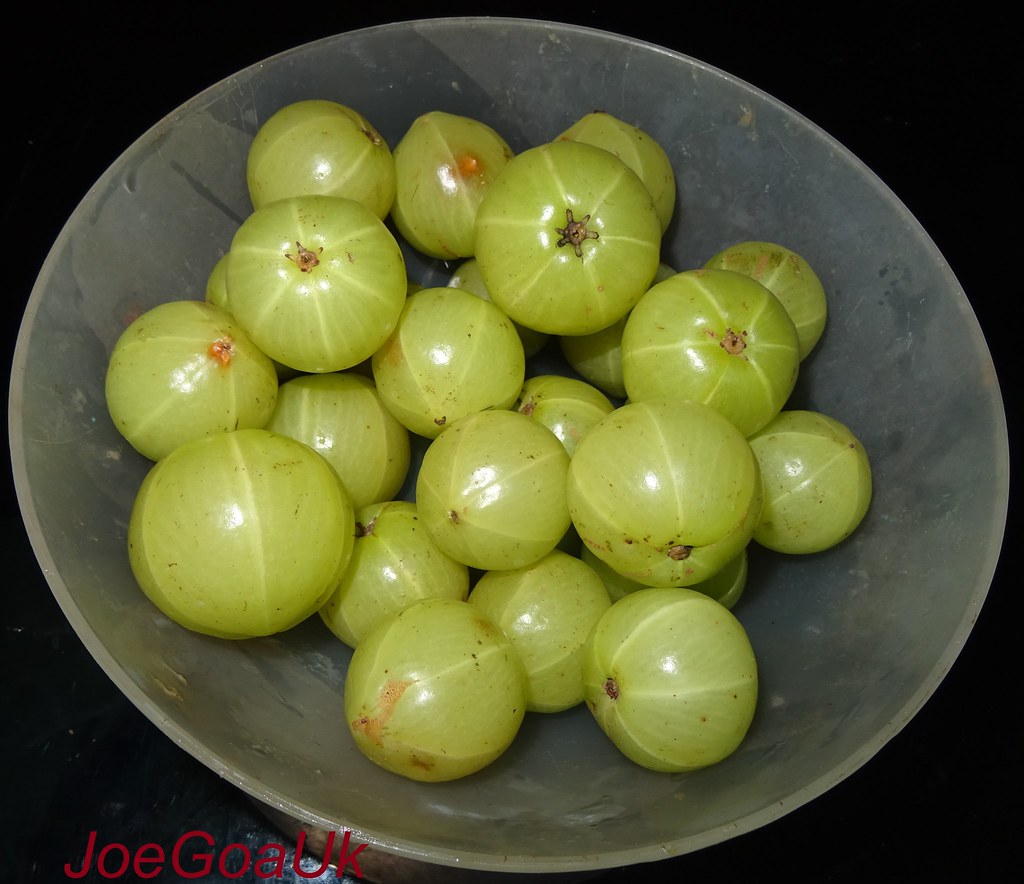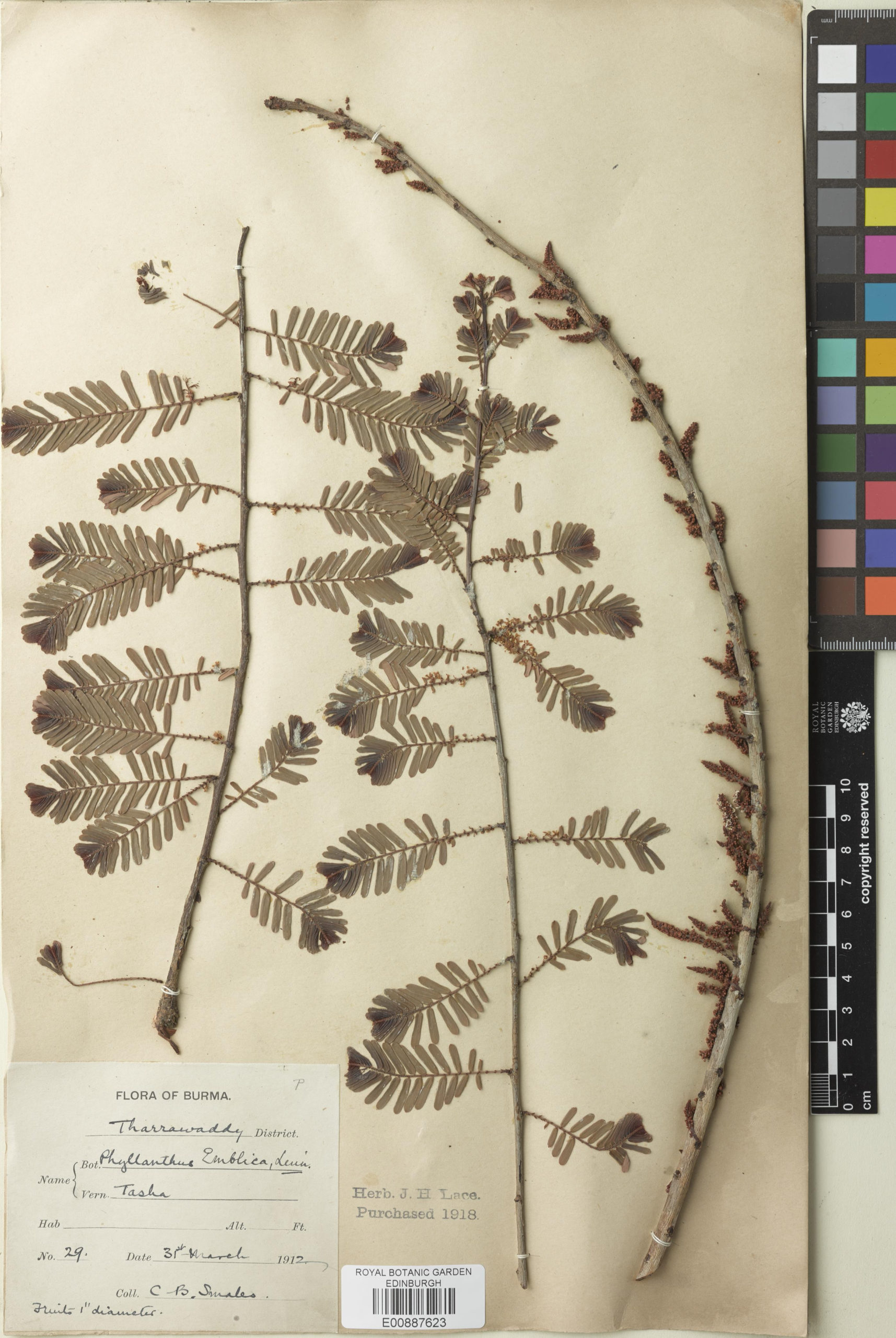The following blog was written by Linde Hess a digitiser in the Herbarium.
Since 2021 we have increased our digitisation capacity with the goal of getting to 1 million specimens imaged by Autumn 2024. Each digitiser is assigned a family of plants to work through. This series of blogs will spotlight the families that have been completed by a member of the team.
The name Phyllanthaceae was first published by Martinovin (Tekhno-Bot. Slovar 369. 1820). Martynov’s name was rarely used in the 180 years after he published it. During that time, the plants that are now in Phyllanthaceae were placed in the large and heterogeneous family Euphorbiaceae.
In Southeast Asia a member of this family is being used in various ways. The Indian gooseberry, commonly known as Amla (Phyllanthus emblica) is eaten raw or cooked, it is also used in traditional medicine and has Buddhist symbolism. Scientific evidence indicates that polyphenols are central components in fruits and other sections of the Amla tree, as well as vitamin C, so it may have applications in bolstering the immune system. (Gul et al., 2022).
The medicine Buddha is often portrayed holding amla berries, which are high in vitamin C. The medicine Buddha (Bhaishajyaguru, pronounced Bye-sha-jya-gu-ru) is at the center of an important Buddhist tradition. Followers of Buddhism, worship the medicine buddha to relieve sickness and suffering. (National Museum of Art, Smithsonian).

Our Collections at Edinburgh
Before digitisation of Phyllanthaceae started, 3050 specimens were digitised; afterwards there were, 8122 in our database. This means the mass digitisation push resulted in over 5000 extra Phyllanthaceae specimens being made available to the public online. We currently hold 271 type specimens for taxa in Phyllanthaceae.
Specimens of Phyllanthaceae can be searched on our online catalogue.
Top 5 regions
| No. of Specimens | Herbarium Filing region |
|---|---|
| 1,206 | India, Bangladesh & Pakistan |
| 1,090 | Indo-china |
| 1,055 | Inner China, Korea & Taiwan |
| 1,016 | Malay Islands |
| 471 | Tropical Africa |

Source : https://data.rbge.org.uk/herb/E00887623
Top 5 Genera
| No. of Specimens | Genus |
|---|---|
| 1,946 | Phyllanthus |
| 1,204 | Antidesma |
| 1,154 | Glochidion |
| 687 | Bridelia |
| 620 | Aporosa |
It may be that the genus Aporosa is under represented in the collection, based on distribution data from Plants of the World Online. The native range is South China to Tropical Asia. It also includes Australia (Queensland), but we have no specimens originating from Australia in our collections, nor do we have many from the Philippines.
| No. of Specimens | Herbarium Filing region |
|---|---|
| 0 | Australia |
| 6 | Philippines |
| 38 | New Guinea |
| 59 | Malay Peninsula |
Sources
Gul M, Liu ZW, Iahtisham-Ul-Haq, Rabail R, Faheem F, Walayat N, Nawaz A, Shabbir MA, Munekata PES, Lorenzo JM, Aadil RM. Functional and Nutraceutical Significance of Amla (Phyllanthus emblica L.): A Review. Antioxidants (Basel). 2022 Apr 22;11(5):816. doi: 10.3390/antiox11050816. PMID: 35624683; PMCID: PMC9137578.
Smithsonian, National Museum of Asian Art, 2023. https://asia-archive.si.edu/exhibition/remedy-for-a-cold/
